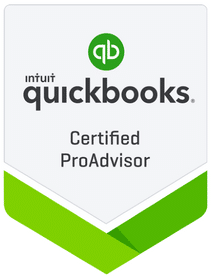- Patrick Roney
- (877) 503-8607
Follow Us :
Follow Us :
Proledge
January 31, 2025
QuickBooks is by far the most popular accounting application available to US companies focused on the management of internal financial data. However, its success and widespread usage primarily stem from the versatility of the application and how, over the years, it has been utilized by third-party developers who gradually enhanced its functionality. QuickBooks, in 2025, is a powerhouse of the industry, and it’s a robust and feature-rich software that can be adapted both to the subjective requirements of just-started SMEs as well as for the growing necessities of internationally focused large-scale corporations.
QuickBooks core operations are typically enough for the vast majority of businesses active in the US. After all, the online version of the software, even with the basic monthly subscription, comes bundled with invoice and expense tracking functionality. Plus, users can connect their banking account directly with the QB app via Direct Connect, track GST and VAT for commercialized services, and it permits bookkeepers to send an unlimited number of invoices. How much does all of this cost? Just $17,50 per month. However, the main benefit of the Intuit-developed program comes from the plethora of QuickBooks add-ons available in the program’s dedicated app store.
Can you use the app’s accounting functionality without separate QuickBooks add-ons? Yes, in fact, for small to medium-sized operations, this is pretty much how the app is designed to work. However, the QuickBooks add-ons are an efficient way to mold the software’s functions to your venture’s primary operations, enhance the functionality of your already-in-use third-party tools, and automate the vast majority of bookkeeping tasks affecting the productivity of your employees. Sure, the utilization of these apps is not mandatory. Yet, they can be a fantastic choice to make QuickBooks scalable in accordance with your firm’s requirements.

According to the data available on the program’s website, as of January 2025, the most popular third party QuickBooks applications for the global market are Shopify Connector, WooCommerce Connector, Reach Reporting, and Syft Analytics. The first two applications facilitate the integration of Shopify and WooCommerce directly with the QB platform and allow users to track business expenses and inventory while also ensuring financial records accuracy across multiple sales channels.
Reach Reporting, on the other hand, is a comprehensive financial reporting and financial analysis tool that can enhance the way QuickBooks analyzes internal monetary reports and allows users to build custom visual templates based on select, subjective parameters. The app can automatically sync with your QuickBooks-available data and will help our professional bookkeeping agents modify your budgeting forecasts and facilitate data communication between your senior management and the CPAs you collaborate with. As for Syft Analytics, this is a QuickBooks add-on that primarily leverages AI capabilities to merge financial data across multiple entries.
Yet, these are not the only QuickBooks add-ons that can increase the functionality of your internal operations. Tipalti, for example, is a powerful AP automation app that can streamline the management of your account payables and receivables, while Expensify is one of the best tools on the market for automating expense reporting. Likewise, if you are worried about the security of your QuickBooks data, our company could leverage Rewind Backups, which is a powerful add-on that can be utilized to restore your bookkeeping data to a previous state or create regular, automated backups of your transactional entries.
From QuickBooks inventory add-ons to apps that enhance the reporting functionality of the program, currently, as of January 2025, the Intuit App store is home to somewhere around 750 separate third-party or QuickBooks integrated applications. Are you not pleased with the reports that can be generated directly from the QuickBooks app? If so, our team could link your profile with add-ons like Fathom. Are you trying to track your employee’s benefits and avoid scheduling conflicts? If so, Gusto might be a choice to consider.
Likewise, QuickBooks is also compatible with tax management applications such as Avalara AvaTax Connector. But how exactly can these QuickBooks add-ons be integrated with your account? Well, for one thing, in your QuickBooks online account, the professional bookkeeping experts employed by our agency will access the app tab and select “find apps.” Then, once we settle on an add-on that can enhance the functionality of your QuickBooks settings, we will click on “install for your client” and save your changes.
Not all of these QuickBooks integrated applications are free, however. In fact, most of them require a separate subscription, or their free period is subjected to a trial. Tipalti, for example, requires a monthly subscription fee of $40 for its simple start plan, while Float starts at $50 per month with the first 14 days free. Some QuickBooks add-ons are expensive. So, their appeal will be dependent on your venture’s financial operations.
You can contact us anytime if you have questions or encounter a problem with your bookkeeping program.
As previously mentioned, QuickBooks desktop add-ons can expand the program’s functionality. Ultimately, the installation of separate add-ons is beneficial for customization, and it can allow your account to automatically sync with the rest of the third-party tools leveraged by your employees. Are you a little bit behind schedule with your financial recordkeeping procedures, and do you want to catch up? If so, enhancing QuickBooks’s functionality with separate add-ons might be of help. That said, there are also disadvantages.
Most of the QuickBooks add-ons available on the program’s app store are not free, and the costs can increase quickly. Sure, integrating your QuickBooks account with Shopify, Expensify, Square, or HubSpot might be necessary to continue your operations, and so will probably be to connect QuickBooks to your bank account or the third-party payment aggregators used by your clients. However, other apps might not be mandatory for the success of your operations. With over 750 options to choose from, your venture’s future financial success will depend on the decision you make when setting up your account and which QuickBooks add-ons you consider necessary for your internal tasks.
We can help you make a choice, reduce your employee’s dependency on CPAs, and ensure that your transactional data is prepared for surprise IRS audits. Together with your senior management, we can uncover the best QuickBooks desktop add-ons for your operations, find third-party QuickBooks applications that can reduce the workload of your employees, and generate financial reports that can later be used to dictate your firm’s financial framework. We can answer your questions about QuickBooks add-ons hosting, our employees are open to your suggestions, and we are keen to collaborate with your payroll manager and CPA.

Bookkeeping is one of the most important while simultaneously disregarded elements behind long-term business development. Sure, the products you commercialize and the services you offer to clients will be flashier and will lead to tangible increases in sales and market share that, with time, will be correlated with a predictable rise in your venture’s profitability. However, when it’s all said and done, the efficiency and accuracy of your internal financial recordkeeping operations could represent the key factor behind your organization’s stability. One small mistake in your financial recordkeeping procedures might represent the end of the line for your company’s expansion ambitions and put you in conflict with the IRS.
Why should you use our work? Well, in short, the professional expertise of our bookkeeping specialists represents one of the best ways to mitigate the impact of your financial activities and reduce the likelihood of accounting errors. Our team will migrate your venture’s transactional data from offline records to digital-only solutions like QuickBooks, maintain the accuracy of your general ledgers, reconcile your data with the ones available to the banks you collaborate with, and assure the accuracy of your account payables and receivables.
Can you do this alone? Sure, at first. However, over time, the complexity of the financial operations required for maintaining the efficiency of your venture will surpass both your internal worker’s competency and the free time they can allocate to financial recordkeeping tasks. Our employees, on the other hand, will always be available for your queries, know which QuickBooks add-ons are worth investing in, and benefit from the necessary experience to assist your CPA and payroll manager in any way needed.


Fill out the form below to sign up to our Blog Newsletter and we’ll drop you a line when new articles come up.

There are lots of businesses that need to find efficient ways to keep track of their finances nowadays, and if you are a business owner, you have experienced this first-hand.

As we all know, automated means of running your business have started to become very popular recently due to all of the perks that it provides. This is not to

So you’re at that point in developing your small business where you’re looking into accounting solutions. If so, you might have started to wonder what’s the best bookkeeping software for

Welcome to bookkeeping 101, the place where we discover how to do bookkeeping effectively, accurately and easily. If you’ve started your small business already or if you’re on the verge

What exactly influences the long-term financial success of American SMEs? Ask 100 business entrepreneurs this question, and you will probably get 100 variations of the same answer. The quality of

Starting a business is not one of the most challenging parts of the business industry, the difficult part emerges when it comes to securing a long-lasting and successful organization. If
Bookkeepers.
Professional. Affordable.
ProLedge is a bookkeeping services firm.
Copyright © 2024 All rights reserved.